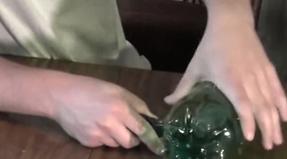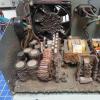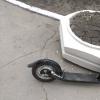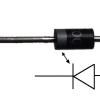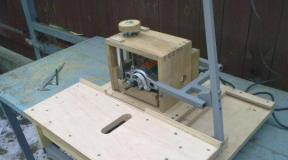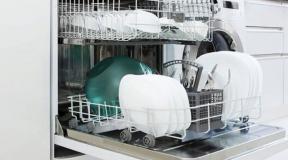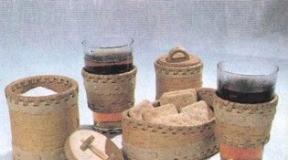Height and diameter of the chimney for solid fuel boilers. Chimney for a gas boiler: design features and requirements for gas boilers What pipe diameter is needed for a gas boiler
From the article you will learn how to install a chimney for a gas boiler in a private house, about external and internal chimneys, about chimney elements, about coaxial chimneys, about the features of a condensing gas boiler that does not use conventional chimneys, about brick chimneys and about the correct installation of a chimney .
Why do many people choose gas heating these days? Yes, because it is the cheapest type of fuel.
Once you have decided on the choice of a gas boiler, you should also think about removing the “waste” gas from the room. What should a chimney be like for a gas boiler? The Fire Inspectorate has very high requirements for these structures, so approach the work consciously and responsibly.
Selecting the overall dimensions of the chimney
The gas boiler chosen for heating a private house must be available to you, only after that you can select the correct chimney for the gas boiler and calculate its dimensions (see).

The height of the chimney depending on its location relative to the ridge of the house

Attention. If there are extensions above the house or it is planned to build them in the near future, then it is necessary to build a pipe that extends beyond the adjacent building.
Variations with chimney length
By selecting the required diameter and length for the chimney pipe and calculating its usable area, it may turn out that this same area will be less than the internal area of the gas boiler. If you change the pipe diameter to the next one (all pipes are produced in standard diameters), then with the same length you will get an excess chimney area and, accordingly, an excess consumption of material.
What can be done in this situation? Increase the length using a smaller pipe diameter. The table shows the minimum pipe heights. They can be increased, but not decreased.
After calculating the overall dimensions of the chimney pipe and purchasing the necessary building materials, you can begin installation.
Installation of chimneys for gas boilers
Immediately before starting work, you should determine the location of the chimney. There are 2 accommodation options:

When choosing the location of the chimney, you should understand:
- location inside a private house will provide the structure with the most “comfortable” operating conditions;
- the location behind the walls of a private house requires the presence of insulation to prevent the chimney from freezing; in this case, it is advantageous to use a sandwich pipe (the sandwich pipe has a multi-layer device, in the center of the sandwich pipe there is a layer of insulation).
Of course, the choice of location of the chimney for a gas boiler is yours. Check out the table below to help you make your choice.
Comparative characteristics of a chimney inside and outside a private house.

How to make a chimney for a boiler?
Installing a chimney for a gas boiler in a private house is not very easy.
Let's look at the basic principles of installing a chimney for a gas boiler.
- It is necessary to correctly assemble all pipe elements.
- In places where the smoke exhaust structure passes through the ceilings or walls of a private house, it is necessary to install special passage elements.
- Insulation of all surfaces in contact with flammable materials.

Chimney elements of a floor-standing gas boiler:
- adapter from the gas boiler pipe to the chimney pipe;
- tee with inspection (at the bottom there is a fitting designed to remove condensate);
- main fastenings - bracket and wall clamp;
- bends, they are used at a distance of no more 2 m from the beginning of the chimney, otherwise it becomes possible to reduce the boiler draft;
- feedthrough pipe;
- telescopic pipes;
- special tip having a conical shape
Please note that the tip for chimneys that remove “exhaust” gas must have a conical shape. It is strictly forbidden to install ordinary deflectors and umbrellas. It is allowed not to install the tip at all.
Requirements for the chimney of a floor-standing gas boiler:
- the slope of some sections of the chimney is allowed no more than 30°;
- maximum branch to the side - 1m;
- the smoke exhaust duct device should not have ledges or narrowing of the cross section;
- the maximum number of elbows that a structure can include is 3, the radius of curvature must be greater than the diameter of the pipe;
- at turning points it is necessary to install a hatch for cleaning and eliminating condensation;
- one side of a rectangular chimney should not be 2 times larger (smaller) than the other, i.e. the shape should not be elongated;
- At the bottom of the chimney, an inspection and drip device is required;
- Deflection of chimney elements is not allowed;
- the pipe links are placed on top of each other by at least half the diameter of the pipe;
- Any gaps between pipe joints are not allowed;
- in places where the ceilings (roofs) pass, the pipe should not have joints;
- all elements must be very tightly connected to each other;
- the slope of the pipe towards the gas boiler must be at least 0.01°;
- Roughness in the chimney is not allowed, the inner surface of the chimney elements must be perfectly smooth;
- horizontal sections can have a total length 3m in buildings under construction and no more 6 m in built;
- Below the connection point of the tee, a so-called “pocket” is required, with a length of at least 25 cm with a hatch (this will provide access to the pipe and the ability to clean it);
- distance from the pipe to the structure (walls and ceiling) for flammable materials - 25 cm, non-flammable - 5 cm;
- if the pipe passes through unheated areas of the structure, thermal insulation or installation of a sandwich pipe must be provided;
- when removing “exhaust” gases from utility appliances, dampers (gates) should be provided;
- it is necessary to bring the gate control to an accessible place with fixation of the “open” and “closed” positions;
- If the device has a traction stabilizer, then dampers are not needed.
How to properly build a chimney for a gas boiler outside the house?
- We attach a passage element to the pipe coming from the floor-standing gas boiler, which will pass through the wall of a private house.
- After the opening is ready, we take the chimney out. The sandwich pipe section and the hole in the wall must be insulated.
- We attach the tee with revision, put on the plug.
- We extend the sandwich pipe by attaching links, attach it to the wall of the house with brackets, in increments of at least 2 m .
- Having reached the estimated height of the chimney, we attach a cone-shaped tip.
- We reinforce all sandwich pipe joints with clamps, which must be tightened with bolts or wire.
- It is advisable to paint the pipe with heat-resistant paint, which will protect the material from corrosion.
If you do not want to use sandwich pipes as a building material for the chimney, then do not forget about the thermal insulation of the structure.
Installation of chimneys for boilers in the house
Let's start with the preparatory work:
- We mark the holes for the chimney in the ceilings and roof.
- Be sure to check the marked marks several times with the dimensions of the passage pipe. Cut out the required opening for the pipe.
Let's start installing the pipe:
- A pipe comes from the boiler. We connect the adapter to it.
- Next, we attach the tee and revision (for cleaning the pipes), attach the steel sheet and install the main bracket.
- We extend the pipe, if necessary, use the so-called elbows.
- When passing through ceilings, we use a special pipe.
- We put a galvanized steel sheet on the pipe with a hole slightly larger than the diameter of the pipe. We attach the sheet to the ceiling on both sides.
- We reinforce all joints with clamps secured with wire or bolts.
- The chimney is secured using wall clamps (each 2 m) and brackets (each 4 m).
- We complete the design with a special cone-shaped tip, which will protect the chimney from precipitation and wind blowing.
Insulation of chimney elements
All contacting parts of the chimney and flammable structure must be insulated. To do this, the passage pipe must be covered on all sides with a foil-coated basalt mat with fire-resistant mastic. Mineral wool insulation can be laid around the perimeter of the opening in the ceiling.
Upon completion of installation work, be sure to check the tightness of all seams in the structure. Make an ordinary soap solution and apply it to all chimney seams. If, after connecting a gas boiler to the chimney, you see bubbles, this indicates a leak.
Brick chimney for gas boilers
A chimney can be built not only from steel (certain grades), but also from brick. Or rather, the chimney will be located in brickwork, i.e. the chimney pipe can be metal, asbestos or ceramic. Visually, it will seem that the chimney is made of brick.
Why is it undesirable to build a chimney made of brick?
The fact is that brick is a fairly porous material that does not hold heat well enough. When gas burns, water vapor with various impurities is formed, which, in fact, must be removed from the room, and the construction of a brick chimney will contribute to the formation of condensation.
Chimney for condensing boilers
In general, the chimney of a condensing boiler differs little from the chimney of a conventional boiler, but there are some peculiarities. The chimney of a condensing boiler must be made of acid-resistant materials to protect against corrosion.
It is important that the chimney of the condensing boiler is located with a slope towards the heating unit. It is necessary that the condensate flows back, but that precipitation does not enter the unit. Raindrops can damage the condensing boiler.
Chimney for wall-mounted gas boilers
The most optimal building material for a wall-mounted chimney is double-circuit pipes.
A coaxial chimney consists of 2 pipes, which are inserted one into the other (see). This chimney resembles sandwich-type pipes, but without insulation between the pipes. This ensures the removal of “exhaust” gas and the flow of fresh air through the gap between the pipes.

Installation of such a chimney is quite simple. We attach a flow pipe to the pipe from the boiler and take the pipe outside. The distance from the chimney to the ground must be at least 2 m. When placing the chimney under a window, at least 1 m from the window to the ground level.
Gas boilers without chimneys
Gas boilers without a chimney are the last word in technical progress in this direction. The operation of the system as a whole differs from a conventional gas boiler. Let's not go deeper into this issue. The best thing about this system is that there is no need for a traditional chimney.
In any heating system it is necessary to remove combustion products outside the room. The difference is in the chimneys. In the new system, the chimney can be made of PVC pipes (the temperature of the “exhaust” gases is relatively low) with any number of turns; it no longer has to be strictly vertical.
The boiler operating temperature can be any. The unit runs on both natural and liquefied gas. In case of any problem it turns off automatically.
The information you have gathered will help you when installing a chimney with your own hands. If you want to use the services of professionals, then you will be savvy in the topic of chimneys for gas boilers. This will allow you to independently carry out supervision of the work being carried out.
The dimensions of the chimney greatly influence the efficiency and safety of the solid fuel boiler. The amount of thrust depends on them. If it is too strong, heat will also be released into the atmosphere in addition to carbon monoxide. The efficiency of the device will drop. Otherwise, the draft may overturn, that is, carbon monoxide will begin to escape through the ashpit. This is dangerous to the health of the residents of the house.
What can a chimney look like?
The smoke exhaust pipe can be made from various materials:
Each of these materials has a different thermal conductivity. The flue gases in the chimney are cooled differently, which affects the draft. This will be taken into account when calculating the height and diameter of the chimney.
The draft is also influenced by the cross-sectional shape of the chimney. It can be round, square and rectangular. The most convenient is the round shape.
Minimum chimney height
This indicator depends on the design features of the house and the height of adjacent houses or trees. There are 3 options:
- If the chimney is located no further than , then its height should be 50 cm greater than the entire height of the house. At a distance of 10 m from the bottom of the house to its top, the height of the chimney pipe used is Нт = 10+0.5 = 10.5 m.
- If the chimney is located at a distance of 1.5-3 m from the roof ridge, then its height can be equal to the height of the house.
- If the distance from the ridge is more than 3 m, then you need to use the formula Нт = П – D*0.1763:
- where P is the height of the house;
- D is the closest distance from the chimney to the line that descends from the ridge of the roof down the house (must be perpendicular to the horizon);
- 0.1763 – numerical expression tg(10°).

According to this formula, Ht = 10 – 3*0.1763 = 9.47 m.
Read also: Manufacturing a long-burning boiler with a water circuit
These three options are possible if there is no tall house or tree nearby. Otherwise, a chimney with a height of 10.5 m may fall into the wind pressure zone. This means that traction will be poor. In this case, you need to increase the chimney. To determine the amount of expansion, you need to find the highest point of the adjacent house and draw a conditional line from it so that it forms an angle of 45° with the ground. The top of the chimney should be above this line, since the entire space below it is a wind support zone.

Many manufacturers of solid fuel boilers sell plates in which the dimensions of the chimney and the amount of required draft correspond to a certain power.
Definition of traction
To do this, use the formula:
hc = H*(ρв – ρг):
- where H is the height of the chimney, starting from the smoke hole in the solid fuel boiler;
- ρв – air density;
- ρg – carbon monoxide density.
Formula for calculating ρв:
ρв = ρн*273/(273+t):
- where ρnu is the air density under standard conditions (equal to 1.2932 kg/m³);
- t is the outside temperature (it is better to take a temperature of +20 °C, since it is the worst operating condition).
For determining ρg you need to use special signs “Air density values that are given to operating conditions.” To do this, you need to find the average temperature of carbon monoxide in the chimney.
The calculation of a chimney for a gas boiler is influenced by a number of factors: the dimensions and layout of the room in which installation is intended, the model and technical characteristics of the device, the material and design of the pipes. Failure to comply with installation requirements violates fire safety standards and deteriorates the performance and power qualities of the boiler.
Coaxial chimney for gas boiler
Formula for calculating the optimal design
The formula for calculating the parameters of a chimney combines several conditions, each of which is calculated separately, analyzed and added to the marking scheme during installation. This formula shows:
- flue gas movement speed;
- chimney length;
- sectional shape of the structure;
- channel area;
- room height;
- chimney material;
- average internal and external temperatures;
- how much does free fall accelerate?
- pipe wall smoothness coefficient.
For example, the pipe cross-section (F) in m2 is calculated using the following equation:
(КхQ)/(4.19х√ˉh)=F,
in which K is a coefficient (calculated empirically), Q is an indicator of the degree of performance of a gas boiler (power, kW, indicated in the technical data sheet of the boiler), and h is the height of the chimney.
To calculate the value of gravity (mm water column), the effective height of the chimney is multiplied by the difference between the air density and the density of the flue gases.
Calculation formulas identify new parameters and check the correctness of the calculation. This is how they check the correctness of the calculations of the dimensions of the chimney length using the formula:
P*L>S,
in which P is the perimeter of the cross-section of a square pipe, L is the length of the chimney, S is the area of the inner surface of the pipe. For a pipe with a round cross-section, the P indicator is replaced by I. I can be calculated using the formula I = 2пR, where R is the radius of the pipe.
Other indicators regarding the technical characteristics of the boiler, the gas supply rate to the device, which will be needed for calculations, are in the passport documentation.

Dependence of length on boiler power and pipe cross-section
Pipe material requirements
In addition to supplying air to the burner and good draft, the chimney exhibits:
- corrosion resistance;
- endurance under extreme temperatures;
- resistance of the coating to aggressive chemical environments.
The indicators of these quantities are taken into account in the calculations and influence the choice of chimney material and the operating features of the gas boiler. So, the combustion products emitted by the device are at a low temperature (about 150 ° C compared to 300-600 degrees for solid fuel boilers) and the rate of their removal through the chimney is also low. The smoke cools down faster than it reaches the dew point and forms condensation inside the chimney. Therefore, important quantities for calculating the dew point are:
- density of water vapor in combustion products;
- fuel composition and moisture content;
- excess air and temperature in the coefficient.
In addition, information about the technical data, materials and design of the pipes can ensure high performance of the chimney. The most preferred ones include:
- ceramic;
- steel (sandwich pipes);
- condensation
It is impossible to use a brick chimney under a gas boiler: it does not resist condensation well and is destroyed under its influence, it is not sealed and provokes the leakage of combustion products. It is undesirable to use pipes with a square cross-section; they are inconvenient to use, accumulate soot, and distort the operation of the boiler. The optimal shape is a circle or oval with smooth inner walls.

Sandwich pipe
Installation location value
There is a difference between where the boiler is installed. The chimney is calculated for installation:
- in a private house;
- apartment building.
For private housing, vertical natural air circulation and forced draft are used. Another option for removing combustion products is to install a chimney with an exit through the wall (coaxial). For an apartment in a multi-storey building, the use of horizontal gas exhaust is permitted.
Depending on the area of the room:
- if the dimensions of the room are less than 80-100 m2, it is recommended to install branches with forced draft;
- in rooms with an area of more than 100 m2, a natural and forced system for removing combustion products is used.

Boiler installation in a private house
How does calculation affect installation work?
Calculating the chimney for installation is important, since this stage is fundamental and work begins with it. In addition to these nuances, SNiP requirements put forward several more points that are taken into account when arranging for the removal of combustion products during installation. These include:
- 2 gas channels can be connected to one chimney at a distance of at least 750 mm;
- when assembling the pipe, a minimum number of narrowings, bends and horizontal sections are allowed (no more than 3 on one vertical riser), otherwise the traction will be disrupted;
- the cross-sectional diameter corresponds to the dimensions of the outlet channel of the pipe located on the gas boiler;
- the drainage system is made at a height of 5 meters and is insulated with insulating materials, the joints are treated with sealants;
- in the drainage device, vertical deviations are allowed no more than 30%;
- There is a condensate collector at the bottom.

Standards for the location of chimneys relative to their height
Alternative calculation methods
Even when correct calculations are used, gas boilers are operated correctly: do not overheat, do not set to maximum power, and are cleaned once a year. It is recommended to rely on the help of professionals for cleaning, installation and calculations.
They use consultations in centers where a gas boiler is purchased, which will provide detailed information with the installation requirements for the selected model, or use free online programs for quickly calculating chimney parameters (for example, EN13384, JEREMIAS).
In contact with















The correct installation of a chimney for a gas boiler in a private house is the basis for high-quality heating operation. It is necessary to strictly follow the rules and regulations here, since otherwise it may jeopardize the safety of the residents of the house. Let's take a closer look at how chimneys for gas boilers are installed: requirements and recommendations in our article today.

Regardless of the location of the chimney, there are certain installation rules Source strojdvor.ru
Requirements for chimneys and installation rules
Installation of a chimney and ventilation for a gas boiler occurs in compliance with the chimney installation standards SNiP 2.04.05, and the manufacturer’s recommendations are taken into account:
The size of the channel is chosen to be the same as that of the boiler socket or slightly larger. The height of the pipe is at least 5 meters.
In rooms with traditional hoods, the exhaust air is replaced by air coming from the street and partly from other adjacent rooms.
The chimney is made of non-combustible material.
Important! It is prohibited to use the ventilation duct to exhaust smoke.
After putting a gas boiler or other equipment with a chimney into operation, a chimney inspection report is drawn up.
Requirements for installing a chimney
Installation work is carried out by specialists using all regulatory rules. They are as follows:
Every heating unit has a single chimney outlet.
Free and complete exhaust of smoke into the atmosphere is ensured due to the correctly selected height and cross-sectional size of the pipe (clause 5.1.1.VDPO).
The wall thickness of the metal pipe is not allowed less than 2 mm.

To make a pipe, metal with a thickness of 2 mm is taken Source pech-kamin.ru
To clean smoke channels from soot, recesses with a size of about 250 mm are provided (clause 3.74 of SNiP-91 and clause 5.1.1.VDPO).
When installing a pipe, the smoke channels are made taking into account no more than three turns, and their rounding is equal to the diameter of the pipe (4.2.17.VDPO).
The chimney for a gas boiler in a private house and the exhaust pipe are installed above the roof ridge in accordance with clause 3.73.SNiP-91: up to 0.5 m - with a flat roof; at the level and above the roof itself - when the pipe is located more than 1.5 meters from the roof ridge.
Metal chimneys are made of high-quality alloy steel with anti-corrosion coating.
Types of chimneys
Pipes are made from different materials, which we will consider in more detail.
Brick
Classic brick chimneys for gas boilers are still in demand, regardless of their many disadvantages and weak thermal characteristics. At the same time, they meet sanitary standards and rules, which state:
The pipe is made of fireclay bricks.
To build the walls, a clay solution or special glue is used.
To improve draft, the chimney rises above the level of the roof ridge.

Standards regulate the height of the pipe in relation to the roof ridge depending on the distance between them Source kamin-estet.ru
The masonry ensures tightness.
At the internal hole, the deviation is no more than 3 mm per 1 m.
To protect against precipitation, a deflector is installed on the head of the pipe.
The chimney can also have a mono design, which, due to low thermal characteristics, is repaired every 5-7 years.
On our website you can find contacts of construction companies that offer house insulation services. You can communicate directly with representatives by visiting the “Low-Rise Country” exhibition of houses.
Galvanized pipe
The “sandwich” type device today is the most effective option for chimney designs. The undoubted advantage of these chimneys is their resistance to aggressive environments and various mechanical influences.
The product consists of two pipes of different sizes, with one inserted into the other. Basalt wool is usually used as a filler between them.
Currently, gas boilers use closed combustion chambers. Here, air enters and smoke is exhausted by a coaxial pipe. This is an original device, relatively recently introduced, but already very popular among users.
The non-standard solution lies in the supply of air through a pipe that removes combustion products. It turns out that one pipe performs two functions due to the design features.

A coaxial chimney is a pipe in a pipe Source rubankom.com
And its characteristic difference from ordinary pipes is the following... A smaller pipe (60-110 mm) is located in a larger diameter pipe (100-160 mm) in such a way that they do not touch each other.
At the same time, the structure is a single whole due to jumpers along the entire length and is a rigid element. The inner pipe serves as a smoke exhaust, and the outer pipe serves to supply fresh air.
Air exchange at different temperatures creates draft and sets the air mass in directional movement. The air in the room is not used during operation of the boiler, thus maintaining the microclimate in the room.
Ceramic
Such a chimney is a composite structure that includes:
Smoke exhaust duct made of ceramic material.
A layer of insulation or air space.
Expanded clay concrete outer surface.
This complex design is due to several reasons. First, the chimney pipe is too fragile to be left unprotected.
The ceramic pipe is always located inside some solid block Source heatylab.com
Secondly, ceramics have high thermal conductivity, and therefore it needs reliable insulation. The inner round pipe has a smooth surface, while the outer one has roughness that does not affect the integrity of the product.
Typically, such chimneys are produced in lengths from 0.35 to 1 m, depending on the manufacturer. The connection of the inner and outer pipes occurs through a lock, which is a thinning in outer size at one end and an expansion of the inner pipe at the other end.
Important! The joining of these pipes is carried out strictly along the axial line.
The expanded clay concrete outer surface is made of a square shape with a round hole inside. In addition, this product provides space for insulation, which is held in place by metal bridges. At the same time, they are fixed on the outer surface and make the pipe securely fastened.
Stainless steel
A steel gas chimney seems to be more reliable than a brick one. They are resistant to corrosion, immune to temperature fluctuations, and are not affected by increased air humidity and aggressive environments.

In addition, such stainless steel pipes have a number of advantages:
Long period of operation.
Multifunctionality.
Relatively low cost.
Great strength.
Possible implementation of a product of any complexity.
Chimneys made of this material are characterized by an assembly of modules, which allows the replacement of a damaged segment if necessary. The installation of chimneys is done using special outlets that allow them to fit harmoniously into certain roof elements.
Main mistakes when choosing a flue for a gas boiler
The most common mistakes when installing a pipe for a gas boiler in a private house are:
Incorrectly chosen height and cross-section of the pipe.
Lack of heat-insulating material when installing an external chimney or in a transition hole into an unheated attic space.
Failure to comply with fire safety standards (fire safety rules).
The pipe removing gas from the boiler is led into the brick channel shaft without liner, which leads to the rapid destruction of this hole.
Installation of steel chimneys made of material that does not meet the requirements (resistance to aggressive environments, high temperatures or thin walls).
Video description
To see several rules for choosing chimneys, watch the video:
Chimney installation is divided into several stages - preparatory work, installation itself, then connection, startup and, if necessary, debugging of the entire system.
General requirements
When several heat-generating installations are combined, each of them creates its own chimney. In exceptional cases, a tie-in to a common chimney well is allowed, but a difference in height of at least one meter must be maintained.
First, the chimney parameters are designed and calculated, which are based on the recommendations of gas boiler manufacturers.
When summing up the calculated result, the internal cross-section of the pipe cannot be less than the diameter of the boiler outlet pipe. And according to testing according to NPB-98 (fire safety standards), the initial speed of the natural gas flow should be 6-10 m/sec. And besides, the cross-section of such a channel must correspond to the overall performance of the unit (8 cm 2 per 1 kW of power).
Installation steps
Chimneys for gas boilers are mounted outside (attached system) and inside the building. The simplest is the installation of the outer pipe.

Installing a chimney on a wall-mounted boiler is done as follows:
A hole is cut in the wall. Then a piece of pipe is inserted into it.
The vertical riser is assembled.
The joints are sealed with a fireproof mixture.
Fixed with wall brackets.
An umbrella protecting from precipitation is fixed on top.
An anti-corrosion coating is applied if the pipe is made of metal.
Proper installation of the chimney guarantees its impermeability, good draft, and does not allow soot to accumulate. Installation performed by specialists will significantly reduce the cost of maintaining this system.
When constructing an opening for a pipe in the roof of a house, special boxes with aprons are used. In this case, the design as a whole is influenced by such factors as:
The material from which the pipe is made.
External design of the chimney.
Type of roof covering.
The main factor influencing the choice of design is the temperature of the gas that passes through the pipe. At the same time, according to standards, the distance between the chimney pipe and combustible materials must be at least 150 mm. The most advanced assembly system is considered to be in segments, where all elements are assembled using the cold forming method.
Video description
How to install a chimney pipe, see the following video:
Connecting a ceramic chimney
Ceramic chimneys themselves are practically eternal, but since this is a rather fragile material, you need to clearly understand how to correctly connect (docking) the metal part of the chimney and the ceramic one.
Docking can be done only two ways:
By the smoke– a metal pipe is inserted into a ceramic one. It is important to remember here that the outer diameter of the metal pipe should be smaller than that of the ceramic one. Since the thermal expansion of metal is much greater than that of ceramics, otherwise the steel pipe, when heated, will simply rupture the ceramic one.
For condensate– a metal pipe is placed on a ceramic one.
For both methods, specialists use special adapters, which, on one side, are equipped with a gasket for contact with a metal pipe, and on the other, which contacts directly with the chimney, are wrapped in a ceramic cord.
The joining should be carried out through a single-wall pipe - it has a higher heat transfer coefficient. This means that the smoke will have time to cool down a little by the time it reaches the adapter, which ultimately extends the service life of all materials.
Video description
Learn more about connecting to a ceramic chimney in the following video:
Conclusion
VDPO shows great demands on chimneys for gas boilers, which is why installation must be carried out by specialized teams. Since proper installation guarantees not only long-term operation of the device, but also makes living conditions in a private home safe.
If gas is chosen for heating the house, care should be taken to remove combustion products. This means that you need to select and correctly install a chimney for a gas boiler. Compliance with the rules and regulations in this matter absolutely cannot be neglected, since this can call into question not only the health, but also the life of the residents of the house.
One of the most dangerous products formed during almost all types of combustion is carbon monoxide. This is an insidious and very dangerous substance, the inhalation of which can lead to severe forms of poisoning.
When a gas boiler operates during fuel combustion, in addition to other combustion products, carbon monoxide is also formed.
If the chimney that removes combustion products is installed incorrectly or damaged, this can lead to poisoning.
The danger should not be underestimated. Carbon monoxide (also known as carbon monoxide) is odorless and colorless, so poisoning can occur completely unnoticed by anyone in the house.
Once in the human body, carbon monoxide molecules interact with hemoglobin. As a result, the so-called carboxyhemoglobin is formed, which prevents the entry of oxygen molecules into the tissues of the human body.
In addition, carbon monoxide can have a very bad effect on other biochemical processes in the body. There have been cases when carbon monoxide poisoning was discovered too late, and the person simply could not be saved.
Image gallery

